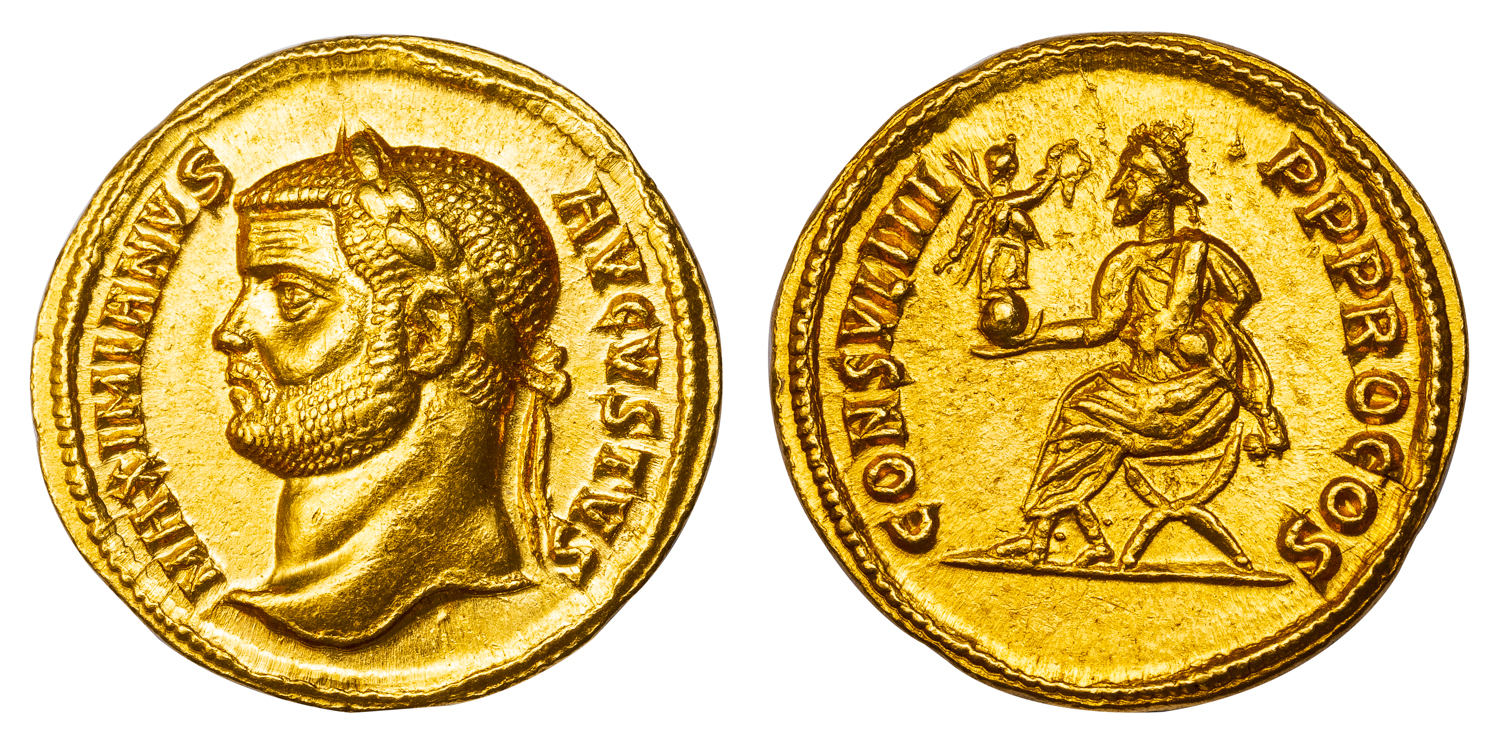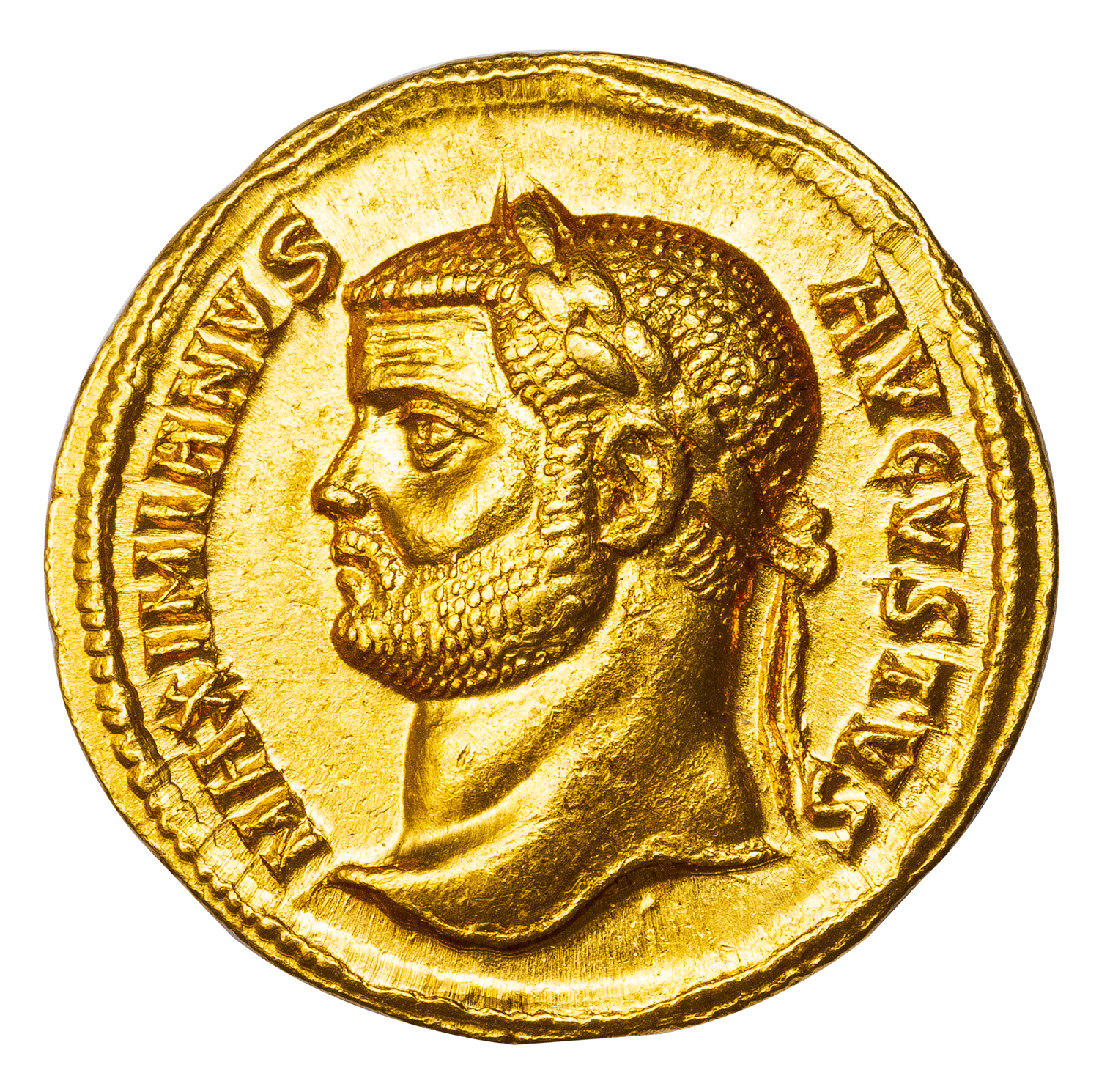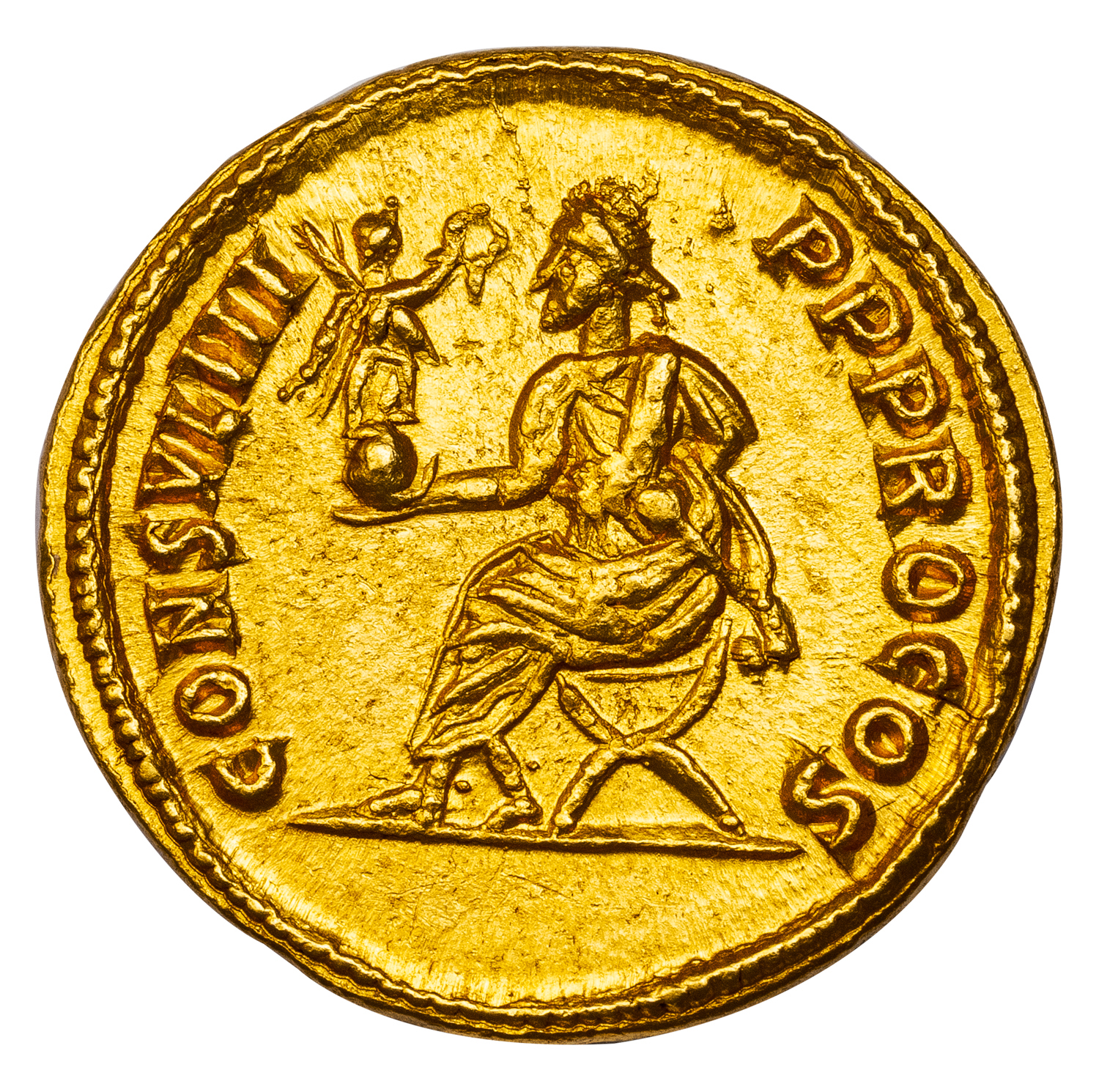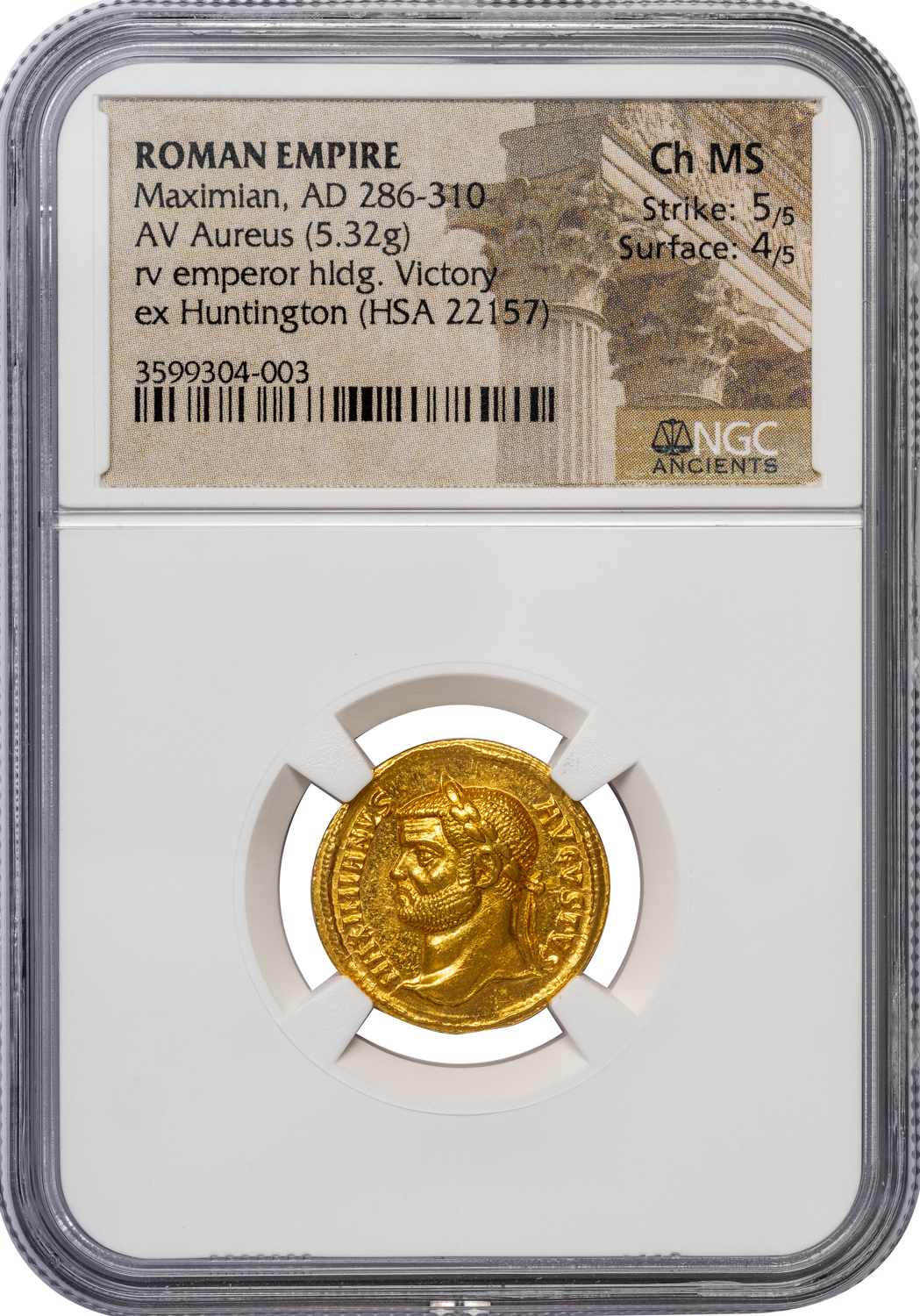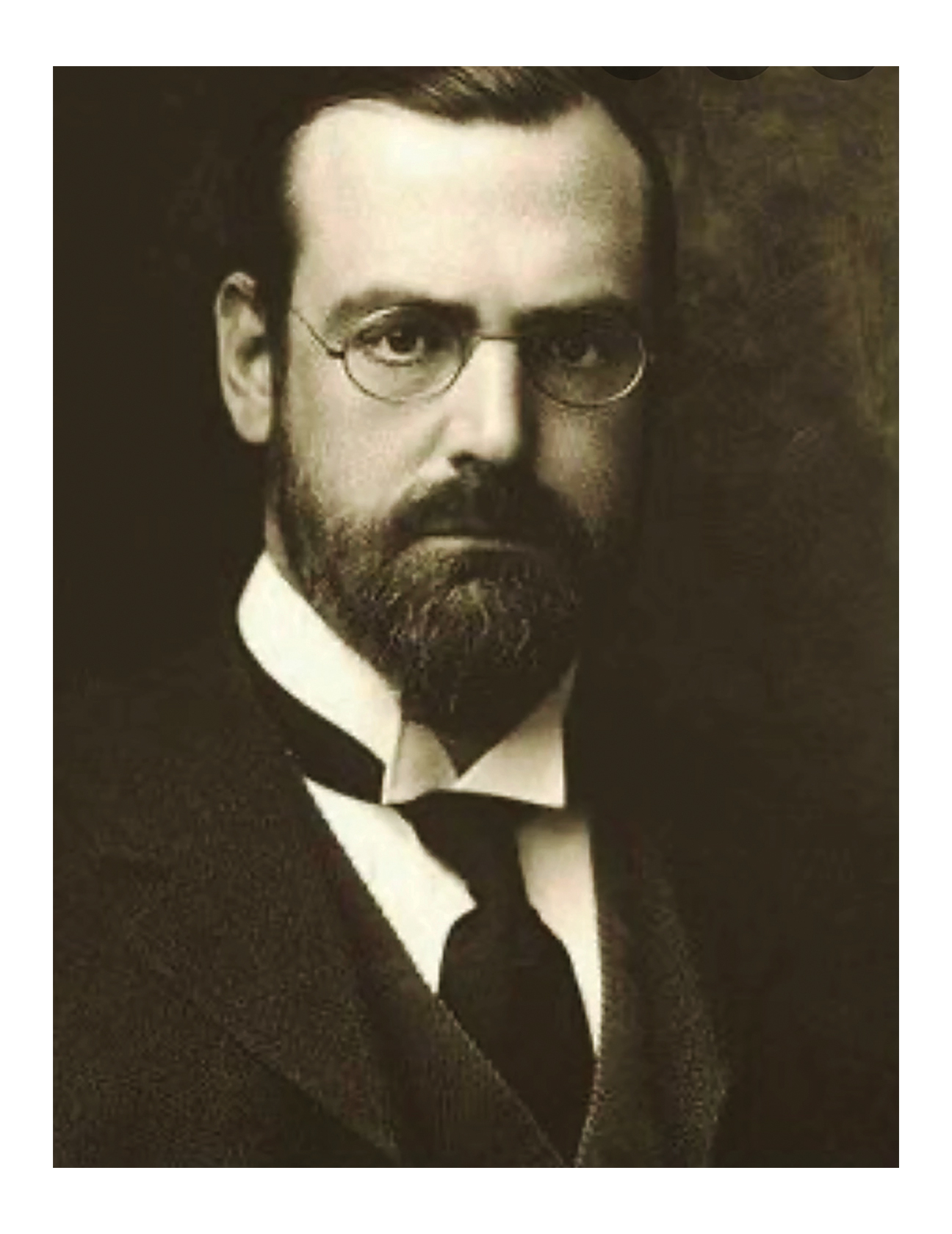MAXIMIAN GOLD AUREUS – ISSUE OF ANTIOCH EX ARCHER HUNTINGTON COLLECTION AND ONCE IN THE AMERICAN NUMISMATIC SOCIETY – CHOICE MINT STATE STAR NGC GRADED ROMAN IMPERIAL COIN (Inv. 19618)
$35,000.00
19618. ROMAN EMPIRE. MAXIMIAN, AD 286–310.
Gold Aureus, 5.32 g, 19 mm. Issue of Antioch, ca. AD 290–293.
Obv. MAXIMIANVS AVGVSTVS, laureate head of Maximian left. Rev. CONSVL III P P PROCOS, Maximian seated on curule chair left, holding Victory on globe who offers a wreath to him.
RIC V.II 610; Calicó 4614 (same obverse die).
Ex Archer M. Huntington gift to the Hispanic Society of America, residing for many years at the American Numismatic Society, inv. 22157; ex Numismatica Ars Classica 67, 10/17/2012 (the Huntington Collection of Roman Gold Coins, part I), lot 217.
NGC graded as CHOICE MINT STATE, Strike 5/5, Surface 4/5, the Huntington provenance noted on label.
In AD 285, Diocletian appointed his loyal military companion, M. Aurelius Valerius Maximianus (Maximian), to serve as his Caesar. However, when major revolts erupted in Gaul, the Alemanni, Burgundians, Chaibones, and Heruli invaded the empire across the Rhine frontier, and Carausius proclaimed himself emperor in Britannia, Diocletian gave Maximian full authority as a second Augustus in AD 286 and established the western Roman Empire as his area of authority. Unfortunately, while Maximian managed to stem the barbarian tide, his attempts to bring Carausius to heel failed in AD 290.
In AD 293, Maximian’s ongoing challenges in the West prompted the reorganization of the Diarchy (“Rule of Two”) of Diocletian and Maximian as a Tetrarchy (“Rule of Four”) in which each Augustus was assisted by his own Caesar. By AD 298, Maximian and his Caesar, Constantius I Chlorus, had restored Britannia to the Roman Empire, held the Rhine frontier against the Franks, and stopped Moorish raiding in North Africa. Maximian then returned to Italy to enjoy a life of luxury until AD 303, when he was reunited with Diocletian in Rome to celebrate the vicennalia (twenty–year anniversary) of Diocletian’s reign, the decennalia (ten–year anniversary) of the Tetrarchy, and a triumph for Persian and Moorish victories.
In AD 305, the increasingly ill Diocletian decided it was time to lay down his powers and let his Caesar Galerius assume power as Augustus in the East and convinced Maximian to retire at the same time and allow Constantius Chlorus to take over in the West. Maximian followed Diocletian into retirement with great reluctance and when his son Maxentius was illegally proclaimed Augustus in Italy in AD 306, he found it difficult to resist the invitation to provide his support. Several armies dispatched by Galerius were unable to dislodge the father–and–son rebels, but in AD 307 Maximian was forced to flee to the court of his son–in–law Constantine I after he attempted, but failed, to depose Maxentius.
In AD 308, Diocletian came out of retirement to restore order, forcing Maximian to give up his imperial pretensions and retire to the court of Constantine. However, in AD 310, while Constantine was off campaigning against the Franks, Maximian reported that he had been killed in battle and assumed the title of Augustus in his place. When it was revealed that Constantine was still alive, what little support Maximian had evaporated and he fled to Massalia (Marseille), where he was finally arrested and forced to renounce his imperial powers for a third time. With all hope of returning to power now lost, Maximian hanged himself in AD 310.
This wonderful aureus comes from the collection of Archer M. Huntington, an American philanthropist best known for his foundation of the Hispanic Society of America and his great benefactions to the American Numismatic Society, both of which were originally situated in the Audubon Terrace complex financed by Huntington in New York City. Because they were sister institutions sharing the same location, until 2008 it was customary for Huntington coins belonging to the Hispanic Society to reside in the trays of the ANS.

